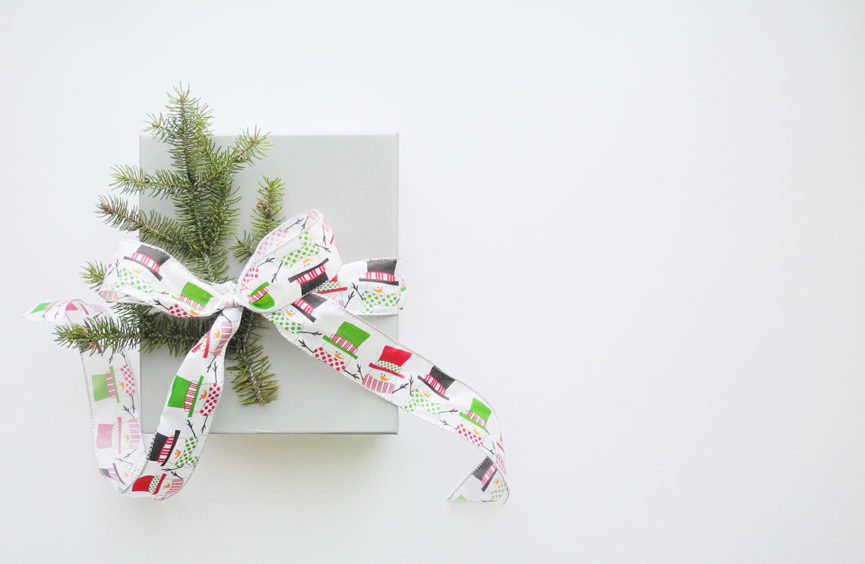Photo by DiEtte Henderson on Unsplash
Open your family’s eyes to many opportunities to celebrate Christmas by giving, more than just by receiving. Here are some gift ideas:
Giving gifts. My husband and kids usually look back at the past year and try to put together a concept or message we’d like to share for Christmas. Each member of the family may have different experiences, so we try to come up with a resounding statement to string everything together. This is reflected not only through the kind of gifts we give, but in the messages on our gift tags and the way we package our gifts.
During the year of the La Niña or water shortage in the Philippines, we thought of giving away bottled water as simple gifts. My husband, the best artist in the world, wrapped it innovatively such that the bottle looked like a chorister singing Christmas carols. We wanted the gift to help us focus on praising the Savior, the Living Water, the Real Reason for the Season.
During one Christmas, when our youngest was learning her first words, we decided to use the concept of “words” and centered on the Living Word, whose birth we celebrate every Christmas. Connected to that theme, each family member shared their favorite phrases, expressions, verses and quotes from books and printed them as tree ornaments. For presents, we chose to give our godchildren, family and friends books, journals, and writing implements.
Make it customary to ask your godkids or their parents what they need, so you can bless them with practical gifts. Inquire about their new interest so you get to know them more.
Our children can be very persistent in letting us know the gifts they want. So at the start of the month, they list down on a wall poster what they would like to receive, including “immaterial” presents like a visit to the museum or a scenic place, or a movie date. They can write or draw the items. As they see the list grow, they will be able to filter out what they don’t really need and even number these “according to priority”. You can take a picture of the poster so you can refer to it as your shopping list, or when godparents ask for gift ideas. Update your list by crossing out items that someone has committed to give.
Do you change your Christmas tree decors yearly according to a color motiff, or material? Choose a family, a public school, a clubhouse or barangay hall to give your past decors to or use them as part of your gift packaging, perhaps as an accent with your ribbon.
You can also think of a different recipient every Christmas for a special package or baskets of treats. Prioritize your househelp and their families especially those who may be leaving for their hometown for a Christmas vacation. It can also be the family of your village staff, security guards, a group of orphans or street children, widows or prisoners. Gifts don’t have to be fancy or big:
- You can write down your Christmas prayer for missionary families, or send cards of appreciation attached to money gifts to community workers like postmen, and streetsweepers.
- A cash gift is also practical for an organization, or a gift certificate for church workers.
- A gift basket to your dentist, doctor or neighbor doesn’t have to be limited to fruits or grocery items, but may be filled with homemade goodies or vitamins, extra bulbs/batteries, clotheslines or clips, or a nice potted herb from your garden.
- You can gather prayers, Bible promises, words of cheer, even coupons of service they can pick from in an “In Case of Discouragement, Pick One!” Box.
- Attach a simple token like a bag of microwave popcorn to promise a friend a movie date next year or a couple your babysitting services so they can go out on a date. It can also be a tea bag or sachet of coffee to let them know you’ve reserved a certain date to treat them out to a drink or a meal.
- When I did some writing for a calendar project, I got many complimentary copies and used these as gifts to our close couple-friends. We designed a sticker and placed it on a suggested day for a coffee date with them. We called it “The Gift of Time”.
- There were some Christmases when we would choose a beneficiary like a missions hospital, a livelihood program, an evacuation center for calamity victims, or some scholars, in lieu of buying gifts for others. We came up with inexpensive tokens like a mini first-aid kit, a jumbo pencil, and school glue – practical things to serve as tokens, accompanied by a short write-up of the beneficiary who will be receiving the cash originally intended as our gift fund.
Receiving gifts. Do you open gifts right away as you receive them during Christmas parties? This way you immediately get to thank the giver! The tricky part is when your child does not happily appreciate what she gets and things get awkward.
Waiting for Christmas Eve to unwrap gifts teaches a child the benefits of delayed gratification. Send a snapshot of the child opening the gift or using it, or a video of him reading the tag and giving a personal thank you to the person who gave it. This trains the child to give importance to relationships, the thought, and the gesture of kindness, more than just the object. Young children usually enjoy multiple gifts, but it can also be overwhelming to open all presents in one sitting. You can space that out throughout the day. You can group the gifts according to size, color of wrapper, or givers, and maybe reserve some for Christmas morning, even hide some in the unreachable places beneath your tree, to be brought out on a day to surprise the kids when they get bored, feel low or grumpy.
Reading gift tags can be tedious and the little kids just dump them around. But appreciation for the giver is taught when we help them or ask them to read the messages. Tags can add to the clutter at home, but you can also recycle them by forming shapes like a Christmas tree or a star on the blank wall at home. You can also hang greeting cards or postcards from people who snail mail their greetings in a clothesline by a window, the stair rails, the tree, or vertically from a light fixture or the ceiling forming a mobile or a curtain!
Recycling and upcycling gifts. Our Growth Group of couples and our immediate family practice wrapping up all the white elephants (gifts we never or hardly used) and bringing them to our get-together. We put them all in a pile and pick a card from a deck to shuffle the gifts in a creative, fun way to make many rounds of testing patience and sportsmanship. It takes a lot of maturity not to take offense if you see the gift you gave to a group member given up for recycling; or, when you end up with no gift at the conclusion of the game! Try to put in mind that your gift may well have been already appreciated at a certain season in the recipient’s life. It can even be the one gift item recycled by the group every year! Learn to laugh about it as it becomes part of the fun–wondering which box is that infamous ceramic figurine in, and who will get to take it home this year.
Some of us don’t want to offend the giver of our gifts, and can be very sentimental about the little tokens we receive. You can put all these together in a box, and in a few years or so, glue them together to make a sculpture, or a box topper. Every five years or less, depending on the size it has become, you can take a picture of it as a keepsake and give it away.
The art of giving gifts is about putting much thought and effort in creatively coming up with something that the recipient will appreciate, make use of and find meaningful. It can be an inexpensive purchase, or a hard-earned, saved-up-for gem; a handmade craft, or a made-to-order work of art; it can be a coupon that entitles your loved one to a favor, or a simple message of hope. Even the wealthiest minimalist will be grateful for any gesture as long as it is filled with kindness and motivated by love.

More into numbers than words, Richelle Joson-Ligot grew up writing merely in her head and in her heart, making up stories and characters, mixing up syllables to mean a new idea, and recording these all on diaries and in cassette. A voice talent, homeschooler, creative consultant, and choreographer, she is gifted in many ways, but considers the best gifts in her life to be the people the Giver has blessed her with – husband Tot, and children Mishka, Nikita, Miro and Yakob.
Related Posts
-
Celebrating the Christ in Christmas: Family Traditions from A to Z
Yearly traditions bring continuity to a constantly changing world. Surround your family with familiar sights,…
-
Recapturing the Maligayang Pasko Spirit
How do we capture or recapture the Christmas feeling, the magic in our hearts and…
-
The Gift of Womanhood
Have you ever fully appreciated what it means to be a woman? Whether you have…




